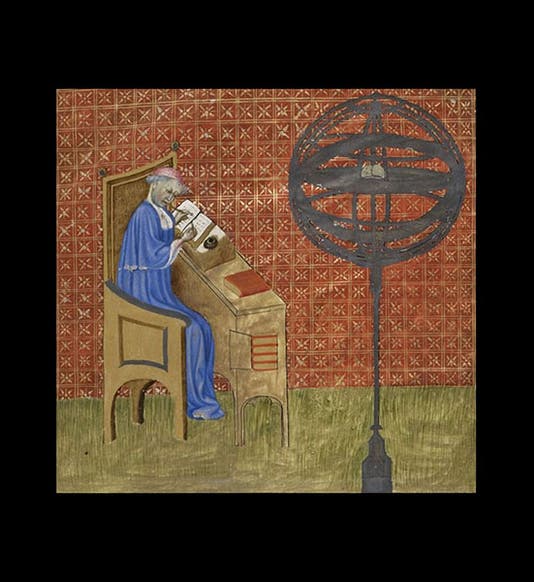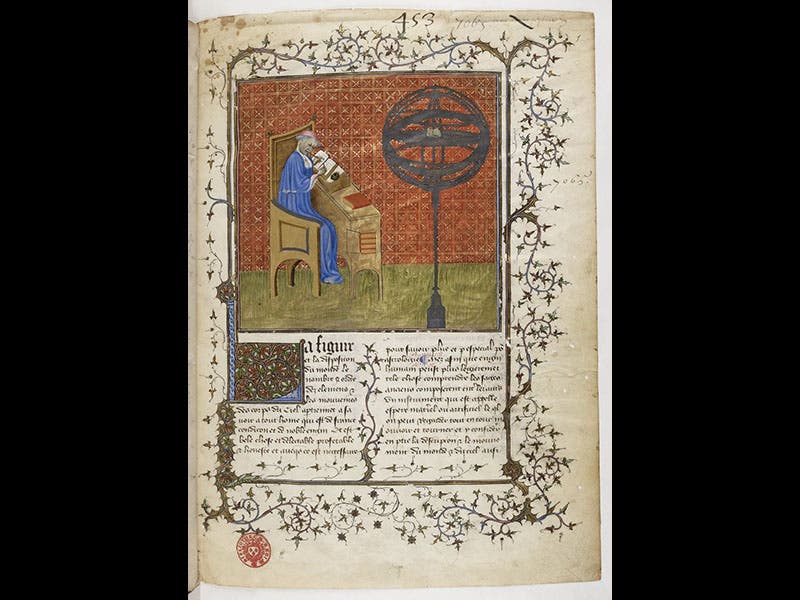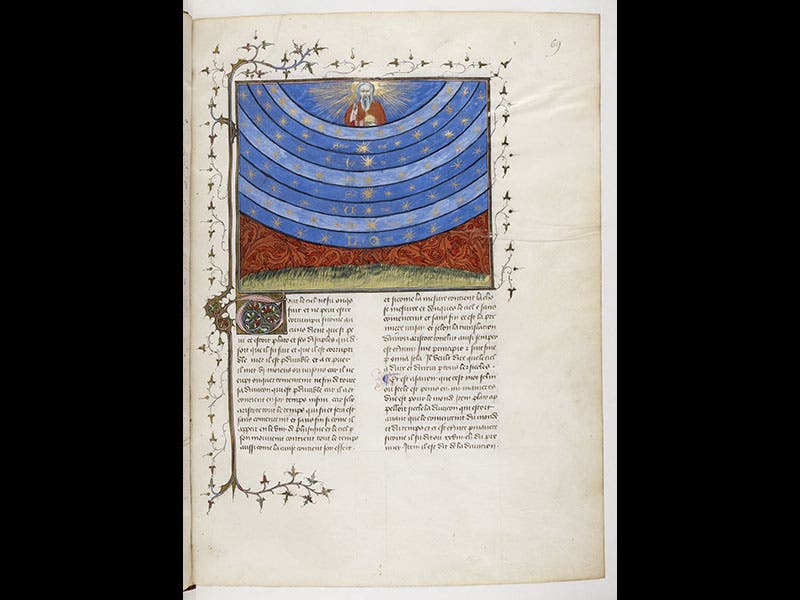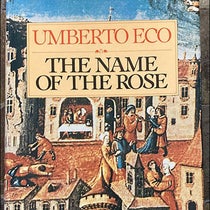Scientist of the Day - Nicole Oresme
Nicole Oresme, a French natural philosopher and theologian, died July 11, 1382, at the age of about 62. Around 1377, Oresme wrote a treatise called Le livre du ciel et du monde (The Book of the Heavens and Earth), in which he discussed the matter of whether the earth might rotate on its axis. Oresme addressed all the old arguments against rotation, such as the claim that an arrow shot into the air on a rotating earth would land far to the west, by arguing that all motion is relative, and an arrow moving away from a stationary earth would act the same as one on a rotating earth. He pointed out how much simpler the cosmos would be if, instead of having every celestial object whirl around at incredible speeds every 24 hours, God simply rotated the earth at a much slower speed and achieved exactly the same effect. Oresme even maintained that those scriptural passages that suggest a stationary earth need not be read literally, since they were written for popular understanding.
Having demolished all the arguments against a rotating earth, Oresme came to an interesting conclusion. He did not propose that the earth really does rotate on its axis. Rather, he concluded that reason cannot be trusted. If rational arguments can be assembled to demonstrate the truth of a doctrine that is known to be false by revelation, then we had best leave reason aside when adjudicating matters of faith. There was still a wide gulf separating the mindsets of Oresme and Galileo.
There is a beautiful manuscript of Oresme’s treatise in the Bibliothèque Nationale in Paris, where it is known as Ms fr. 565. The opening illumination shows Oresme at his desk, with a large armillary sphere in the foreground (first and second images). Another depicts the celestial spheres, which are curiously convex rather than concave, curving up to surround God rather than down to enclose the Earth (third image). Yet another shows Oresme presenting his manuscript to King Charles V of France (fourth and fifth images). Charles was a rather enlightened medieval monarch, and hence called “the Wise,” who encouraged Oresme to produce works in French for his great library. Le livre du ciel et du monde was one of those commissions, and it eventually ended up in the Library of the Duc de Berry, before passing into the national collections.
Dr. William B. Ashworth, Jr., Consultant for the History of Science, Linda Hall Library and Associate Professor, Department of History, University of Missouri-Kansas City. Comments or corrections are welcome; please direct to ashworthw@umkc.edu.











